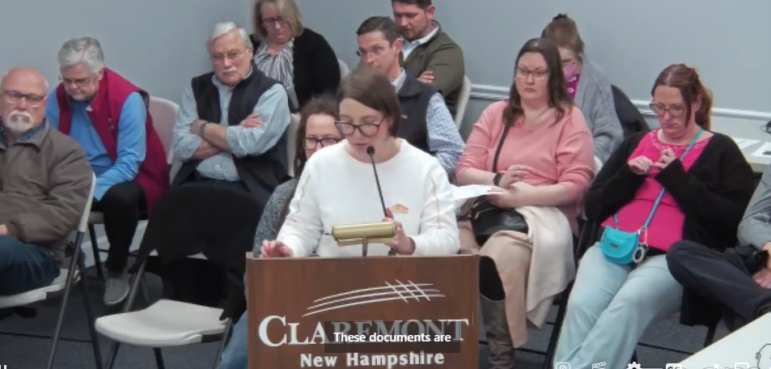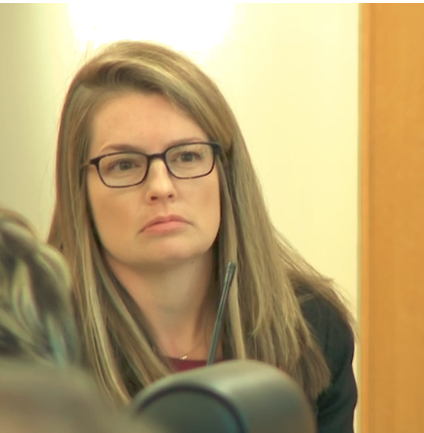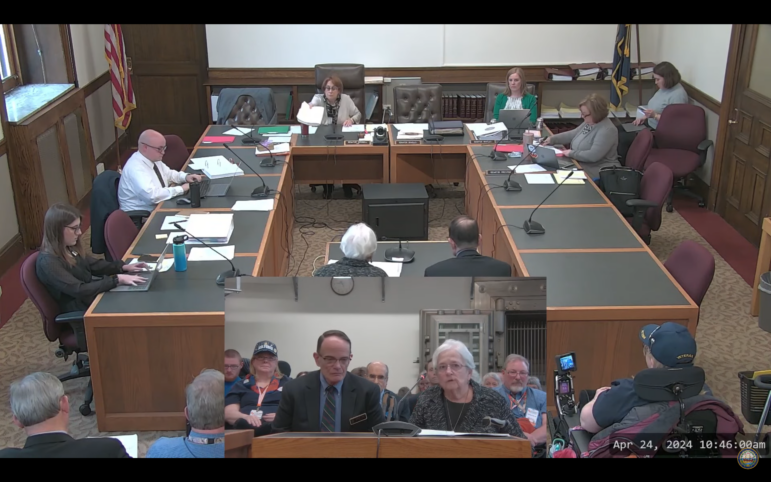By GARRY RAYNO, InDepthNH.org
CONCORD — The House committee redrawing the political boundaries for the next decade will hold public hearings next week on Tuesday and Wednesday in Representatives Hall.
Instead of having maps the committee has voted on, the committee will offer two and maybe more maps of Congressional, House and county commissioner districts at the hearings.
At a work session Wednesday, the House Special Committee on Redistricting reviewed maps of districts for the three commissioners in the 10 counties, and House districts for Rockingham, Merrimack, Belknap and Coos counties.
The House districts for the remaining six counties and the two congressional districts will be reviewed Wednesday, said committee chair Rep. Barbara Griffin, R-Goffstown.
The congressional maps have drawn a great deal of interest after State Republican Committee Chair Stephen Stepanek earlier this year guaranteed a conservative Republican would be elected to Congress in 2022 from New Hampshire because his party controls the redistricting process.
Currently both Congressional seats are held by Democrats and have been since the 2016 election and both U.S. Senators are Democrats although they are elected statewide.
The maps that were discussed at Wednesday’s work session were not on the committee’s website but were available at the hearing room in the Legislative Office Building.
The committee has set standards to follow in redrawing the political maps including adhering to a fairly recent state constitutional amendment requiring that communities large enough to qualify for a representative, have their own district and to keep deviations from the one person, one vote principle as low as possible.
Every 10 years, the political boundaries have to be redrawn to match population changes within the state. The recent census shows that three state counties — Coos, Cheshire and Sullivan — lost population in relation to the rest of the state and the number of seats representing those counties has to be adjusted.
Another consideration is attempting to keep communities intact instead of splitting and combining other communities, but that is often not possible with larger cities and the towns surrounding them.
In general, maps proposed by Democrats on the committee made fewer changes to existing districts than did the Republican plans.
For example, Democrats proposed maintaining the current county commissioner districts in seven of the 10 counties as the population shifts were minimal, while Republicans essentially redrew the maps for eight of the 10 counties.
Neither party wanted to change the district configuration in Hillsborough County, and Strafford County elects its three commissioners at large.
In presenting the plan for Belknap County for the Democrats, Rep. Marjorie Porter, D-Hillsborough, noted that although the district lines had to change because of population shifts, the three current commissioners would be in separate districts.
Griffin said one of the tenants of remapping is not to consider incumbency when drawing new lines. You could be taking care of yourself, she noted.
“You cannot protect incumbency,” Griffin said.
But Rep. Israel Piedra, D-Manchester, said it was not the goal but could be a consideration.
Having voters being able to vote for someone they like is a good thing, rather than having to vote for someone else, he noted.
Rep. Paul Bergeron, D-Nashua, and the former Nashua City Clerk, suggested it should be permissible to consider whether the new district would cause disruption to the existing voters.
“If you change 50 percent of one precinct,” he said, “that is a significant factor.”
But Rep. Majorie Smith, D-Durham, said the task is difficult enough as it is, without adding other criteria the committee has not agreed to.
Agreement over the House districts for the four counties was more elusive among the committee members than the county commissioner districts.
Republicans proposed some major changes to the counties, including a number of new floterial districts that include a number of towns used to lower the deviation from the one person, one vote standard.
One District in Rockingham County included a district with two Portsmouth wards, and the towns of New Castle and Newington for example.
Democrats often tried to include towns in one district that send students to the same school districts, but others noted that community of interest is not one of the standards the committee adopted.
Griffin said she believes the proposed maps will be available for the public to view on-line before the two public hearings next week in Representatives Hall.
Tuesday’s hearing will be at 10 a.m. and Wednesday’s at 5 p.m.
Garry Rayno may be reached at garry.rayno@yahoo.com.





